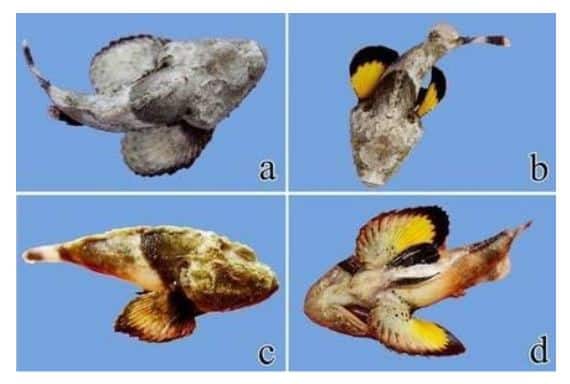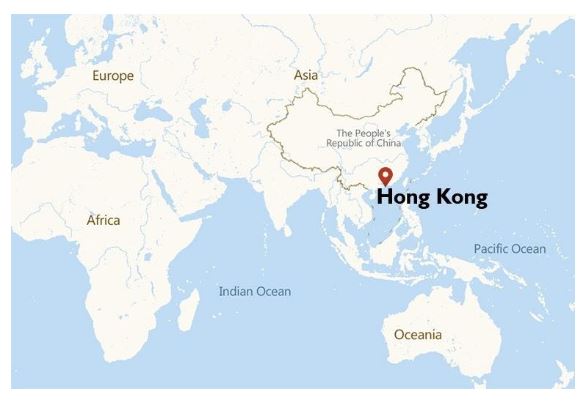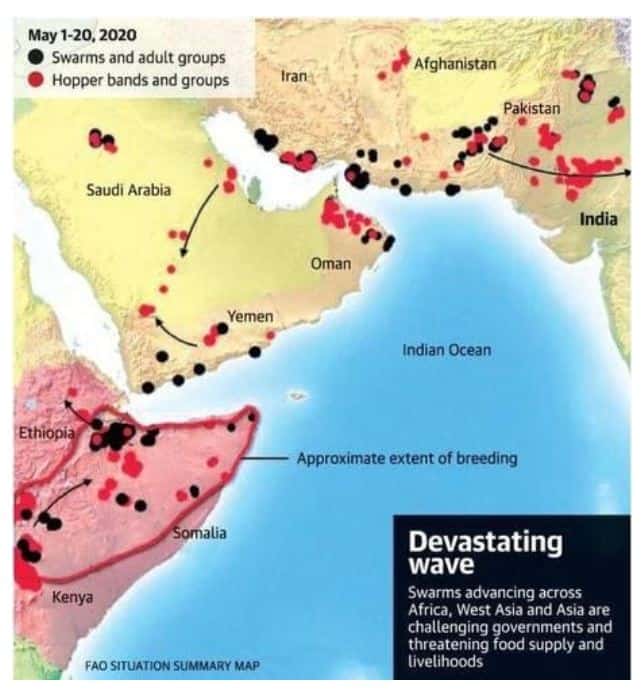IASbaba's Daily Current Affairs Analysis
IAS UPSC Prelims and Mains Exam – 1st June 2020
Archives
(PRELIMS + MAINS FOCUS)
Loan to MSMEs likely to become risk-free
Part of: GS-Prelims and GS-III – Economy
In News:
- The RBI is likely to allow banks to assign zero risk weight for loans that will be extended to the MSMEs under the economic package announced by the government earlier.
Key takeaways
- As a part of the package, Rs.3 lakh crore loan for the MSME sector was announced.
- However, such loans would attract a risk weight of a minimum 20% since these loans did not come with direct government guarantee.
- This facility is similar to the loans that are guaranteed by the Credit Guarantee Fund Trust for Micro and Small Enterprises (CGTMSE).
- Zero risk would mean that banks will not have to set aside additional capital for these loans.
- The move will encourage lenders to extend credit.
Important value additions
Rs. 3 lakh crore scheme
- Under the scheme, 100% guarantee coverage will be provided by the National Credit Guarantee Trustee Company Limited (NCGTC) to eligible MSMEs, in the form of a Guaranteed Emergency Credit Line (GECL) facility.
- Other small borrowers including the Non-banking Financial Companies (NBFCs) can also avail this scheme.
- The tenure of loan under this scheme is four years with a moratorium period of one year.
- The scheme would be applicable to all loans sanctioned under GECL till 31st October, 2020 or till an amount of Rs.3 lakh crore is sanctioned, whichever is earlier.
Credit Guarantee Fund Trust for Micro and Small Enterprises (CGTMSE)
- The Credit Guarantee Fund Scheme for Micro and Small Enterprises (CGS) was launched by the Government of India (GoI) to make available collateral-free credit to the micro and small enterprise sector.
- Both the existing and the new enterprises are eligible to be covered under the scheme.
- The Ministry of MSMEs and Small Industries Development Bank of India (SIDBI) established a Trust named Credit Guarantee Fund Trust for Micro and Small Enterprises (CGTMSE) to implement the scheme.
National Credit Guarantee Trustee Company Limited
- It is a Union Government Company which is classified as a company limited by shares.
- It was set up by the Government to act as a common trustee company to manage and operate various credit guarantee trust funds.
Band-tail scorpionfish: A rare fish found across Sethukarai coast in the Gulf of Mannar
Part of: GS-Prelims and GS-III – Environment; Biodiversity
In News:
- Researchers at the Central Marine Fisheries Research Institute (CMFRI) have found a rare fish from Sethukarai coast in the Gulf of Mannar.
- The specimen has been deposited in the National Marine Biodiversity Museum of the CMFRI.
Key takeaways
- The band-tail scorpionfish (Scorpaenospsis neglecta) has spines which contain neurotoxic venom.
- When the spines pierce an individual, the venom gets injected immediately and it can be extremely painful.
- Eating the fish would lead to death.
- The fish is well-known for its ability to change colour and blend with its surrounding environment to escape from predators and while preying.
- This was the first time that the particular species was found alive in Indian waters.

Image source: The Hindu
China opposes to the presence of Terminal High Altitude Area Defense (THAAD) in South Korea
Part of: GS-Prelims and GS-II – International Relations
In News:
- Recently, China objected to the presence of the USA’s THAAD missile defence system in South Korea.
Key takeaways
- THAAD is a transportable, ground-based missile defence system.
- It is coupled with space-based and ground-based surveillance stations.
- These stations transfer data about the incoming missile and inform the THAAD interceptor missile of the threat type classification.
- Space-based satellites also have infrared sensors which raise alarm about incoming missiles.
- It has been designed and manufactured by the US company Lockheed Martin.
- It has been deployed in South Korea, UAE, Guam, Israel and Romania.
- In South Korea, it is operated by the US army stationed in its army base in Osan, South Korea.

Image source: The Indian Express
Controversial Hong Kong law passed by China
Part of: GS-Prelims and GS-II – International Relations
In News:
- Recently, China’s Parliament passed new legislation for Hong Kong.
Key takeaways
- The law is called the “NPC Decision on Establishing and Improving the Legal System and Enforcement Mechanisms for the Hong Kong Special Administrative Region to Safeguard National Security”.
- It essentially empowers the National People’s Congress (Ruling party of China) to draft new national security laws for Special Administrative Region (SAR) of Hong Kong for the first time.
- The laws could cover any activity that seriously endangers national security.
- The law is aimed at enabling measures to counter, lawfully prevent, stop and punish foreign and overseas forces which are using Hong Kong to carry out separatist or destructive activities.
- The law has been criticised by pro-democracy parties and legal community in Hong Kong.
- It is being said that it undermines the “one country, two systems” model of Hong Kong.
Important value additions
Special Administrative Regions (SAR)
- They are one type of provincial-level administrative divisions of China directly under the Central People’s Government.
- They possess the highest degree of autonomy.
- The legal basis for the establishment of SARs is provided for by Article 31 of the Constitution of the People’s Republic of China of 1982.
- Mainland China is governed by Article 30 of the Constitution.
- Since 1997, Hong Kong has been governed by the Basic Law, which gives the SAR executive, legislative and independent judicial power.
- Only defence and foreign affairs matters are handled by the central government.
- At present, there are two SARs established according to the Constitution:
- Hong Kong SAR (former British dependency) was transferred to China in 1997.
- Macau SAR (Portuguese dependency) was transferred to China 1999.
- Generally, the two SARs are not considered to constitute a part of Mainland China, by both Chinese and SAR authorities.

Image source: Click here
Miscellaneous
The Banks Board Bureau (BBB)
- It was formed on the basis of the recommendations of ‘The Committee to Review Governance of Boards of Banks in India” under the chairmanship of P. J. Nayak (2014).
- It was formed in 2016.
- It is a body of eminent professionals and officials to make recommendations for appointment of whole-time directors and non-executive chairpersons of Public Sector Banks (PSBs) and state-owned financial institutions.
- It is an autonomous recommendatory body.
- The Ministry of Finance takes the final decision in consultation with the Prime Minister’s Office.
- It also recommends personnel for appointment as directors in government-owned insurance companies.
- It engages with the board of directors of all the PSBs to formulate appropriate growth strategies.
- It is a public authority as defined in the Right to Information Act, 2005.
Unified Mobile Application for New-age Governance: The UMANG Mobile App
- Recently, the Ministry of Electronics and Information Technology (MeitY) has added the Indian Meteorological Department (IMD) weather services to the Umang Mobile App.
- It is a unified, secure, multi-channel, multi-platform, multi-lingual, multi-service mobile app.
- It is a Digital India initiative of the Ministry of Electronics and Information Technology (MeitY) launched in 2017.
- It provides seamless integration with services like Aadhaar and DigiLocker and other government services.
- It can be accessed on multiple channels like app, web, and SMS and through multiple devices like smartphones, tablets and desktops.
(MAINS FOCUS)
GEOGRAPHY/ ENVIRONMENT/ GOVERNANCE
Topic: General Studies 2,3:
- Structure, organization and functioning of the Judiciary
- Government policies and interventions for development in various sectors
Locust surge posing a threat to agriculture in India
Context: The outbreaks of the locust attack have been reported from Gujarat, Rajasthan, Maharashtra, Madhya Pradesh, Punjab, Haryana and Uttar Pradesh.
What are locusts?
- The desert locust (Schistocerca gregaria) is a short-horned grasshopper.
- They differ from ordinary grasshoppers in their ability to change behaviour (gregarize) and form swarms that can migrate over large distances.
- They can rapidly reproduce and increase some 20-fold in three months.
- The normal locust season in India spans June-November and coincides with the kharif season.

Pic Source: The Hindu
When was the last big outbreak?
- There were serious outbreaks in 1812, 1821, 1843-44, 1863-67, 1869-73, 1876-81, 1889-98, 1900-1907, 1912-1920
- A particularly bad season in 1926-1931 prompted the British to set up Locust Warning Organization (LWO) in Karachi (undivided India)
- The last major upsurge in India occurred in 1993
- In 2019, Gujarat and Rajasthan reported a significant surge in locust infestations whereby nearly 3.5 lakh hectares of cumin, rapeseed and mustard were damaged
- This was partly due to an unusually long monsoon but also because pest-control operations were inadequate
What is the climate link to the infestation?
- A pattern of warming in the Indian Ocean may be a trigger.
- A phenomenon called the Indian Ocean Dipole, in which the western and eastern parts of the ocean, warm differentially, tend to have an outsized impact in bringing excessive rains to India and West Asia
- A ‘positive’ dipole is when the western part is hotter by a degree or more than the eastern.
- 2019 saw one of the strongest positive dipoles (difference of more than 2 degrees) in the Indian neighbourhood, that it over-rode concerns of a drought in India and brought torrential rainfall
- As a result, monsoons also lasted nearly a month more than what is normal.
- This extended rainfall continued in several parts of West Asia, Oman, Yemen and in the Horn of Africa — Ethiopia, Somalia, Kenya — so much so that that the dry sand became heavily moisture laden, facilitating the formation of several locust swarms.
- Due to favourable winds, it helped swarms to fly and breed in traditional grounds in Iran, Afghanistan, Pakistan and India.
- The unusually mild summer in 2020, which saw several bouts of rainfall over north and western India from March to May, also helped the insects breed.
How are locust invasions dealt with?
- A locust attack has to be dealt with by spraying pest control and plant protection chemicals.
What is the concern this time?
- National Emergencies: Somalia announced a national state of emergency due to the outbreak in February 2020, while Pakistan declared a national emergency for the second time this year, in April.
- Early Arrival: In India, so far swarms have been recorded in nearly 50,000 hectares in Rajasthan and Madhya Pradesh. If they continue to thrive as the monsoon arrives, it could cause serious agricultural damage.
- Can impact Central & Eastern India: Existing groups of swarms have continued to move east and towards central India. Much of these movements were associated with the strong westerly winds of Cyclone Amphan.
- Can Last Longer than usual: Several successive waves of invasions are likely until July in Rajasthan, with eastward surges across northern India as far as Bihar and Odisha
- Corona Pandemic: The national lockdown in the wake of COVID-19 has made the availability of pesticide as well as its transportation difficult. This means inadequate pest control capabilities of authorities
- Shortage of labour: With labour also not being available easily due to the lockdown, spraying operations have been effected and, as a result, locusts are increasing
- Increased regularity: Experience shows that a locust plague usually follows a one to two year cycle after which there is a lull for eight to nine years. However, strong Indian Ocean Dipoles are expected to become more frequent due to global warming of oceans which means regular locust attacks
Is adequate action being taken?
- It has been part of the protocol for many years, for entomologists from India and Pakistan to conduct border meetings and divide pest control responsibilities
- Indian officials, last year and this year too, have blamed Pakistan for not spraying adequate pesticide to stem the nascent population
- Experts have warned of huge crop losses if the swarms are not stopped by June when the monsoons will lead to a new season of sowing rice, sugarcane, cotton and other crops.
Conclusion
- Going forward, there has to be increased focus on natural disasters such as cyclones as well as locust attacks.
Connecting the dots:
- UN Food and Agricultural Organisation
- National Disaster Management Act, 2005
INTERNATIONAL/ SECURITY
Topic: General Studies 2,3:
- Government policies and interventions for development in various sectors
- Indian Economy and issues relating to planning, mobilization, of resources
China-India conflict this time will be part of global Cold War
Context: The recent India-China border clashes and other actions by China has reaffirmed its aggressive behaviour which doesn’t sit well with its aspiration of becoming Global Superpower.
China has begun a confrontation on three fronts.
- Hong Kong
-
- In 1898 British had taken the Hong Kong island on lease for 99 years from the then Qing dynasty of China (after defeat in Opium wars)
- Britain eventually agreed to transfer the island to China upon the expiration of that lease in 1997, after obtaining guarantees from China to preserve Hong Kong’s systems, freedoms, and way of life for at least 50 years
- China had promised to maintain a special status for Hong Kong under the ‘one country, two systems’ principle.
- China is now poised to impose a new national security law on Hong Kong, which increases China’s control over Hong Kong
- The passage of law by National Assembly of China means that China has effectively abrogated the treaty with the UK.
- Taiwan
-
- Taiwan was where the defeated regime of Chiang Kai-Shek, China’s last non-communist president, retired when the Communist Party captured Beijing.
- In the Chinese Constitution there is a pledge to regain Taiwan.
- President Xi Jinping has, without provocation, called for incorporation of Taiwan back into mainland China after 71 years
- Tibet/India
-
- China takes the view that when it was weak in the last two centuries, Britain took advantage, seized Chinese (or Tibetan) territory and incorporated it in British India.
- China began to ask for it from independent India in Jawaharlal Nehru’s days.
- Nehru took the view that territory of British India (Partition apart) was Indian territory.
India-China confrontation – A part of larger narrative
- All the above three demands relate to the core programme of Chinese nationalism.
- It is the desire of China’s President to have a united all Chinese territory under one rule.
- China wants to regain its pole position in the world – Middle Earth – as it was till the 17th century
- This requires China to be the top economic-military power with firm grip over its territories which means a greater integration of its lands
- In 5G technology, China has already outstripped US as the Huawei controversy shows
- Also, China wants to deflect the domestic criticism of its handling of Corona pandemic by raising the passion of Nationalism
- India-China confrontation has to viewed in the larger narrative of assertive Chinese Nationalism as it nears its centenary goals (2049 – 100th anniversary of formation of People’s Republic of China)
What has been the reaction of USA?
- On Hong Kong, UK is yet to respond to China’s actions as it cannot single-handedly stop Xi from taking over Hong Kong.
- The Americans are, however, coming to Hong Kong’s help.
- President Trump’s administration has asked US Congress to place sanctions on Hong Kong regarding travel and financial transactions with the US.
- If the Congress agrees, Hong Kong is finished as a global financial centre.
- On 5G front, US wants to fight China on that front through sanctions in cooperation with Europe.
Way Ahead
- This time the China-India confrontation will not be an isolated affair with India friendless as in 1962.
- It will be part of a global (hopefully) Cold War.
- By 2006 itself, India had arrived at a tacit understanding with USA to help each other out if a war with China was to break out for either country. So the US may help India.
- So India on land and US in the seas, hopefully with US air support India can effectively overcome the challenges of Chinese assertiveness along borders
Connecting the dots:
- Disintegration of USSR and the end of Cold War
- Trade War in post-COVID world
(TEST YOUR KNOWLEDGE)
Model questions: (You can now post your answers in comment section)
Note:
- Correct answers of today’s questions will be provided in next day’s DNA section. Kindly refer to it and update your answers.
- Comments Up-voted by IASbaba are also the “correct answers”.
Q.1 Band-tail scorpionfish is a rare fish which was recently seen in news. It was found from Sethukarai coast of which of the following:
- Gulf of Mannar
- Gulf of Kutch
- Ashtamudi Lake
- Pulicat Lake
Q.2 Terminal High Altitude Area Defense (THAAD) missile defence system, recently seen in news, is manufactured by which of the following country?
- United States of America
- Russia
- China
- Israel
Q.3 Consider the following statements regarding Hong Kong:
- It is one of the Special Administrative Regions of China
- It was a British Dependency till 1997.
Which of the above is/are correct?
- 1 only
- 2 only
- Both 1 and 2
- Neither 1 nor 2
Q.4 The UMANG Mobile App is a Digital India initiative of which of the following Minstry of the Indian government?
- Ministry of Agriculture
- Ministry of Commerce
- Ministry of Electronics and Information Technology (MeitY)
- Ministry of Defence
ANSWERS FOR 30th May 2020 TEST YOUR KNOWLEDGE (TYK)
| 1 | A |
| 2 | A |
| 3 | B |
| 4 | A ( First statement – It is commonly known as the sea cow). |
Must Read
The other perspective on Chinese President XI Jinping (grim future):
About Line of Actual Control between India and China (why it is not defined?):
About Corona Virus and Central Asia:















